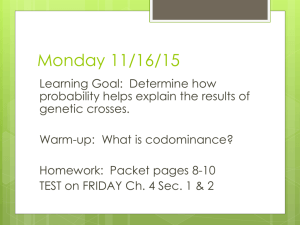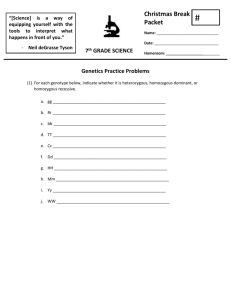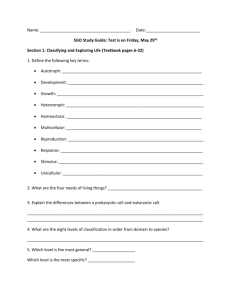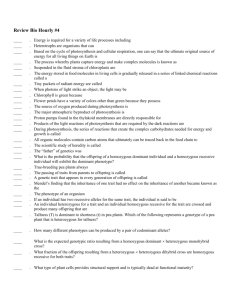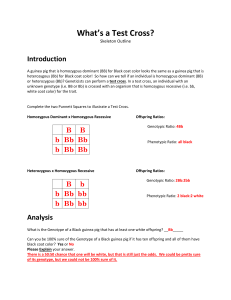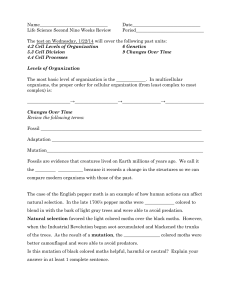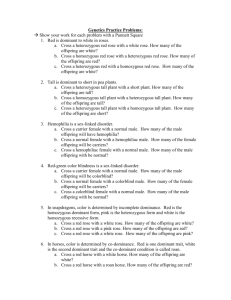Unit 3 Study Guide Directions: Please write in FULL SENTENCES
advertisement
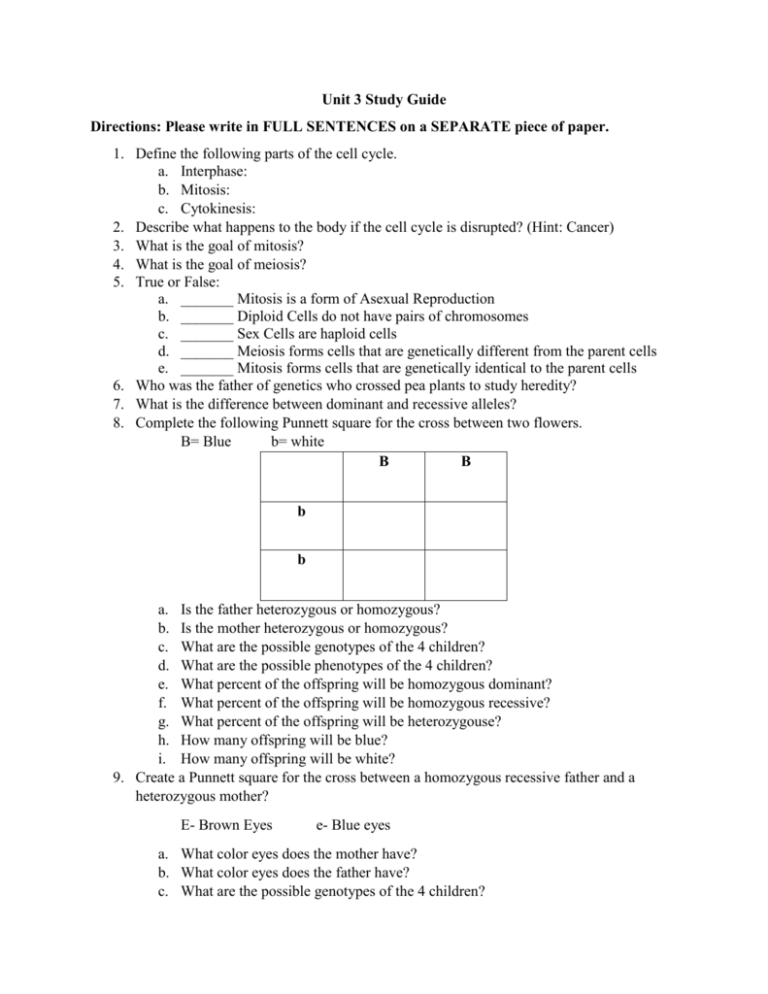
Unit 3 Study Guide Directions: Please write in FULL SENTENCES on a SEPARATE piece of paper. 1. Define the following parts of the cell cycle. a. Interphase: b. Mitosis: c. Cytokinesis: 2. Describe what happens to the body if the cell cycle is disrupted? (Hint: Cancer) 3. What is the goal of mitosis? 4. What is the goal of meiosis? 5. True or False: a. _______ Mitosis is a form of Asexual Reproduction b. _______ Diploid Cells do not have pairs of chromosomes c. _______ Sex Cells are haploid cells d. _______ Meiosis forms cells that are genetically different from the parent cells e. _______ Mitosis forms cells that are genetically identical to the parent cells 6. Who was the father of genetics who crossed pea plants to study heredity? 7. What is the difference between dominant and recessive alleles? 8. Complete the following Punnett square for the cross between two flowers. B= Blue b= white B B b b a. Is the father heterozygous or homozygous? b. Is the mother heterozygous or homozygous? c. What are the possible genotypes of the 4 children? d. What are the possible phenotypes of the 4 children? e. What percent of the offspring will be homozygous dominant? f. What percent of the offspring will be homozygous recessive? g. What percent of the offspring will be heterozygouse? h. How many offspring will be blue? i. How many offspring will be white? 9. Create a Punnett square for the cross between a homozygous recessive father and a heterozygous mother? E- Brown Eyes e- Blue eyes a. What color eyes does the mother have? b. What color eyes does the father have? c. What are the possible genotypes of the 4 children? d. What are the possible phenotypes of the 4 children? e. What percent of the offspring will be homozygous dominant? f. What percent of the offspring will be homozygous recessive? g. What percent of the offspring will be heterozygous? h. How many offspring will be brown? i. How many offspring will be blue? 10. Explain why more men have hemophilia than women. 11. Answer the following questions for ONE of the genetic disorders we learned about. Genetic Disorder: ________________________ a. What are the symptoms of the disorder? b. Is this a dominant or recessive disorder? c. Is this a sex-linked disorder? 12. What are the different ways traits can be controlled? (Human Genetics Notes) 13. Explain Co-dominance with Blood Type. 14. What is a carrier? 15. What is the relationship between proteins and amino acids? 16. What is the relationship between DNA and protein? 17. What are the different parts of a nucleotide? 18. Which parts of a nucleotide make the sides of the ladder? 19. What are the 4 bases and what is the rule for how they are paired? 20. Describe what is meant by a “triplet code”. 21. What is a gene? (DNA structure notes) 22. How is DNA like a cookbook for proteins? 23. Describe the process of how cells make proteins (Unit 3.6 notes) 24. What are mutations? 25. What are the different types of mutations? 26. Who was Severo Ochao? What was he famous for? 27. Who was Rosalind Franklin? What was she famous for? 28. Who were Watson and Crick? What were they famous for? 29. Who was Barbara McClintock? What was she famous for? 30. Describe the following: a. Selective Breeding b. Inbreeding c. Hybridization d. Genetic Engineering 31. Why are people concerned about Genetic Engineering? What are the benefits? Negatives?


